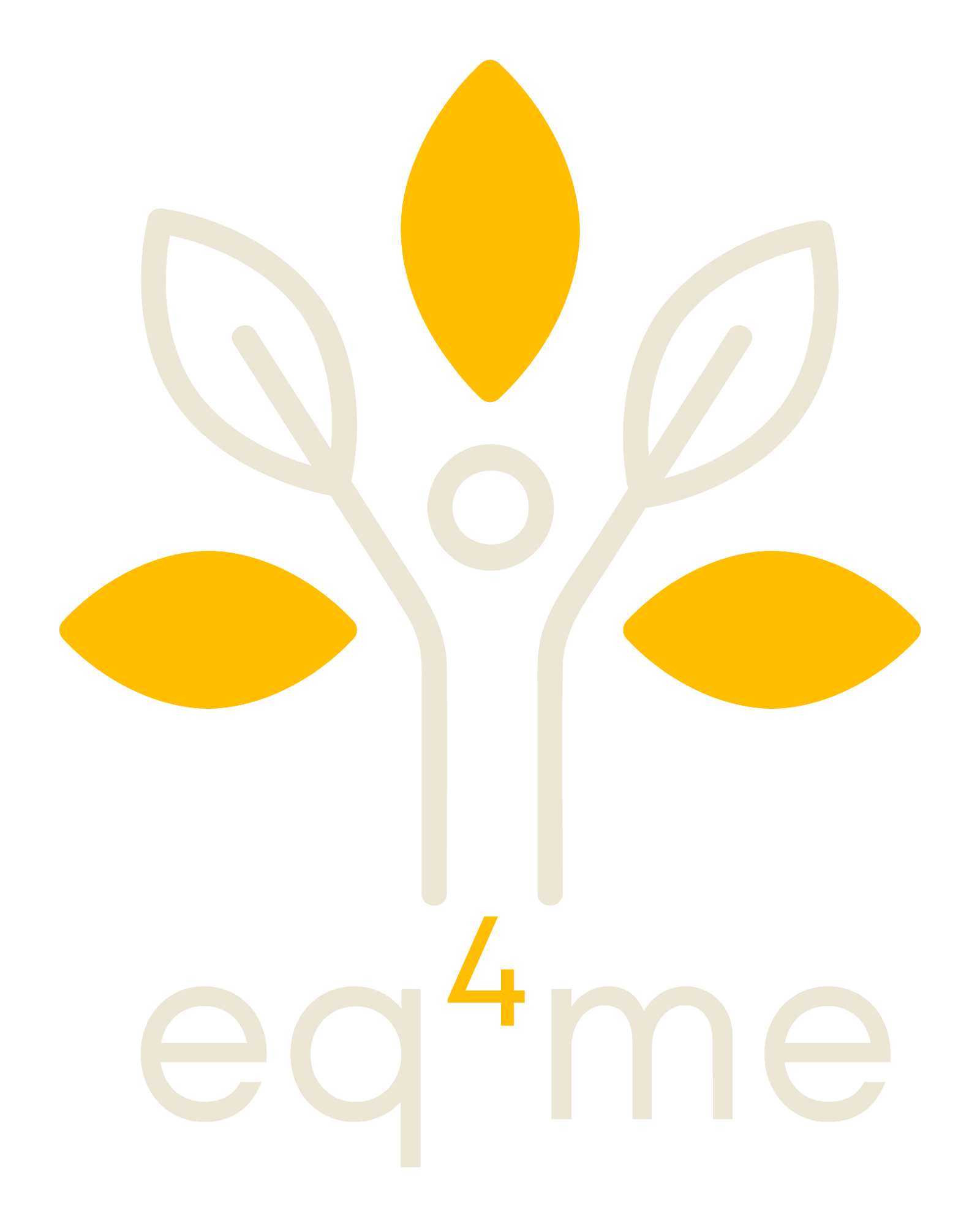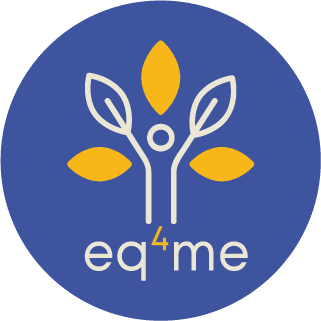When we learn how to use our emotions to impress the mind or move our feelings into a space where they can help us to come up with new ideas and solve problems in a creative way we are using our emotional intelligence to further our aims and achieve our goals.
To get a clear view of the simplicity and complexity of our emotions let’s consider the five core emotions that we all feel at some time or another; happiness, sadness, anger, fear and shame. From these five core emotions we experience over one hundred other emotions at different levels of intensity. For example, if we consider the core emotion of shame, at a higher level of intensity we may feel worthless, at a medium level we may feel embarrassed and at a low level, regretful.
Interestingly only a third of people can actually recognise and label their emotions as they happen, and this is due to the fact that not many people practice the conscious awareness required to do so. Generally people go through life having feelings without really knowing what they mean and why they are there on a conscious level. Indeed, when it comes to negative feelings like sadness and frustration we often deny they are there and quickly change our minds to avoid them. This is because these emotions are perceived as dysfunctional and there is no place for them in a world of constant judgement and instant gratification.
The sad thing is, when we do this we miss out on firstly, being able to recognise the emotion and its source which is crucial information for personal insight and inner healing, and secondly when we stop denying our pain and view it as something that makes us and shapes us, we can use its energy to launch and express our creativity.
Moods, although linked to our emotions, are slightly different. They are more mooted and often appear in four different guises, namely, timid, melancholy, bold or upbeat. Moods can come and go and often last for quite a time. If we don’t recognise our moods and understand them for what they are we also miss out on being able to use them to inspire and fuel critical breakthroughs or creative outcomes.
In the world that we live in today innovation and disruption are commonplace, indeed they are the new normal. What might work for or appeal to customers today could be replaced by a new service or product tomorrow. A good example of how rapidly things change is the extraordinary growth of ecommerce during the Covid 19 pandemic. Around the world ecommerce grew in 90 days by the same amount it had grown in last 10 years. Entrepreneurs that have managed to reinvent their businesses, products and services and have pivoted during this difficult time have used their feelings of anxiety and frustration to come up with new ways to fix problems and to survive.
You may ask yourself, am I really made to think creatively? My answer to that question is yes, absolutely! All of us have been endowed with both logical and creative capacities because all of us can operate in both the left and right hemispheres of our brain. As an infant you were able to use both sides of your brain equally and agilely. It’s just that as you got older and got educated you were made to believe that creativity was only for artists and musicians and dancers and that if you wanted to fit it in you just shouldn’t fit that creativity mould. In fact many creatives were made out to be misfits and trouble makers in society…mad Van Goghs, eccentric Dalis, queer Freddie Mercuries, loners and substance abusers who came across as antisocial.
This conditioning then caused you to levitate towards your left-brain hemisphere and allowed facts and logic and societal norms and rules to dominate your thinking. Everything else was weird and anathema to the norm.
The world as we know it has changed very rapidly in recent times and to stay ahead and stay relevant we are compelled to think more creatively. Being able to toggle between the left and right side of the brain in order to solve problems or come up with new innovations either critically using logical or vertical reasoning or creatively using alternative perspectives to see things from different angles has never been more important.
To do this requires a flexible and motivated mindset that is underpinned by self-acceptance and self-belief, all of which requires you to develop your emotional intelligence and to get in touch with your emotions.
Without the self-awareness required to accept and label your emotions and understand their source you cannot use them to your advantage.
Without being able to control your tendency to seek the path of least resistance you won’t be able to overcome self-doubt and face the feelings which could encourage you to think creatively.
Without being able to socially engage with your co-workers or clients in a creative way you will stop the necessary types of collaboration you need, to come up with new ideas and innovations.
Without understanding how people think, feel and act by developing your relationship management skills you will also not be able to get the best out of the people around you.
For millennia artists, composers, choreographers and writers have used their emotions to create works which have inspired and moved us all. Indeed, creators that are attuned to their emotions, use them to fuel the creative process. Being able to notice emotions in oneself and in others is often the key that unlocks artistic expression. For example, a fiction writer may draw on their own experience of loss when describing a sad character in their book. An artist may draw on their own experience of joy or sadness to create mood in their painting.
Creators like these often make themselves feel a certain way on purpose to generate emotions which help with their work. When we can get in touch with our emotions without denying their extraordinary power, we step out of denial and embrace with confidence the reality of the emotions we feel in our lives and allow this sacred fountain of energy to help us generate ideas, convey a life changing message or design something unique and noteworthy.
Creative thinking is a dynamic process that happens between our thoughts, emotions, actions and our environment. When we are being creative in groups we can use brainstorming to come up with new ideas and make connections between seemingly unrelated words, ideas or objects using random association. When we are being creative on our own we can think outside the box using our imagination to trigger alternative ways to look at things.
Unlike logical or vertical thinking which is concerned with “what is”, lateral thinking is concerned with “what might be”. Working across your normal path of logic, lateral thinking can dislodge sensible and logical patterns of thought revealing new and exciting creative ideas and scenarios.
Now just as we are moved by a song, a dance, a theatre performance, a poem or a beautiful sunset, our emotions also move and energise our thinking and action.
You might say hang on; our emotions can get in the way of clear thinking. This is sometimes true; however, emotions can also help thinking and problem solving if we consider the specific messages they convey and what tasks and activities would benefit from the different feelings and moods we have. Feelings act like an antennae providing us with information about ourselves, our relationships and our environment to help us move forward creatively.
Richard Cullinan is the founder of eq4me, a master coach and the author of 30 EQ Strategies that will change your life.
To get a clear view of the simplicity and complexity of our emotions let’s consider the five core emotions that we all feel at some time or another; happiness, sadness, anger, fear and shame. From these five core emotions we experience over one hundred other emotions at different levels of intensity. For example, if we consider the core emotion of shame, at a higher level of intensity we may feel worthless, at a medium level we may feel embarrassed and at a low level, regretful.
Interestingly only a third of people can actually recognise and label their emotions as they happen, and this is due to the fact that not many people practice the conscious awareness required to do so. Generally people go through life having feelings without really knowing what they mean and why they are there on a conscious level. Indeed, when it comes to negative feelings like sadness and frustration we often deny they are there and quickly change our minds to avoid them. This is because these emotions are perceived as dysfunctional and there is no place for them in a world of constant judgement and instant gratification.
The sad thing is, when we do this we miss out on firstly, being able to recognise the emotion and its source which is crucial information for personal insight and inner healing, and secondly when we stop denying our pain and view it as something that makes us and shapes us, we can use its energy to launch and express our creativity.
Moods, although linked to our emotions, are slightly different. They are more mooted and often appear in four different guises, namely, timid, melancholy, bold or upbeat. Moods can come and go and often last for quite a time. If we don’t recognise our moods and understand them for what they are we also miss out on being able to use them to inspire and fuel critical breakthroughs or creative outcomes.
In the world that we live in today innovation and disruption are commonplace, indeed they are the new normal. What might work for or appeal to customers today could be replaced by a new service or product tomorrow. A good example of how rapidly things change is the extraordinary growth of ecommerce during the Covid 19 pandemic. Around the world ecommerce grew in 90 days by the same amount it had grown in last 10 years. Entrepreneurs that have managed to reinvent their businesses, products and services and have pivoted during this difficult time have used their feelings of anxiety and frustration to come up with new ways to fix problems and to survive.
You may ask yourself, am I really made to think creatively? My answer to that question is yes, absolutely! All of us have been endowed with both logical and creative capacities because all of us can operate in both the left and right hemispheres of our brain. As an infant you were able to use both sides of your brain equally and agilely. It’s just that as you got older and got educated you were made to believe that creativity was only for artists and musicians and dancers and that if you wanted to fit it in you just shouldn’t fit that creativity mould. In fact many creatives were made out to be misfits and trouble makers in society…mad Van Goghs, eccentric Dalis, queer Freddie Mercuries, loners and substance abusers who came across as antisocial.
This conditioning then caused you to levitate towards your left-brain hemisphere and allowed facts and logic and societal norms and rules to dominate your thinking. Everything else was weird and anathema to the norm.
The world as we know it has changed very rapidly in recent times and to stay ahead and stay relevant we are compelled to think more creatively. Being able to toggle between the left and right side of the brain in order to solve problems or come up with new innovations either critically using logical or vertical reasoning or creatively using alternative perspectives to see things from different angles has never been more important.
To do this requires a flexible and motivated mindset that is underpinned by self-acceptance and self-belief, all of which requires you to develop your emotional intelligence and to get in touch with your emotions.
Without the self-awareness required to accept and label your emotions and understand their source you cannot use them to your advantage.
Without being able to control your tendency to seek the path of least resistance you won’t be able to overcome self-doubt and face the feelings which could encourage you to think creatively.
Without being able to socially engage with your co-workers or clients in a creative way you will stop the necessary types of collaboration you need, to come up with new ideas and innovations.
Without understanding how people think, feel and act by developing your relationship management skills you will also not be able to get the best out of the people around you.
For millennia artists, composers, choreographers and writers have used their emotions to create works which have inspired and moved us all. Indeed, creators that are attuned to their emotions, use them to fuel the creative process. Being able to notice emotions in oneself and in others is often the key that unlocks artistic expression. For example, a fiction writer may draw on their own experience of loss when describing a sad character in their book. An artist may draw on their own experience of joy or sadness to create mood in their painting.
Creators like these often make themselves feel a certain way on purpose to generate emotions which help with their work. When we can get in touch with our emotions without denying their extraordinary power, we step out of denial and embrace with confidence the reality of the emotions we feel in our lives and allow this sacred fountain of energy to help us generate ideas, convey a life changing message or design something unique and noteworthy.
Creative thinking is a dynamic process that happens between our thoughts, emotions, actions and our environment. When we are being creative in groups we can use brainstorming to come up with new ideas and make connections between seemingly unrelated words, ideas or objects using random association. When we are being creative on our own we can think outside the box using our imagination to trigger alternative ways to look at things.
Unlike logical or vertical thinking which is concerned with “what is”, lateral thinking is concerned with “what might be”. Working across your normal path of logic, lateral thinking can dislodge sensible and logical patterns of thought revealing new and exciting creative ideas and scenarios.
Now just as we are moved by a song, a dance, a theatre performance, a poem or a beautiful sunset, our emotions also move and energise our thinking and action.
You might say hang on; our emotions can get in the way of clear thinking. This is sometimes true; however, emotions can also help thinking and problem solving if we consider the specific messages they convey and what tasks and activities would benefit from the different feelings and moods we have. Feelings act like an antennae providing us with information about ourselves, our relationships and our environment to help us move forward creatively.
Richard Cullinan is the founder of eq4me, a master coach and the author of 30 EQ Strategies that will change your life.




